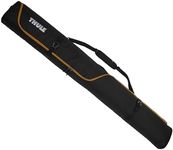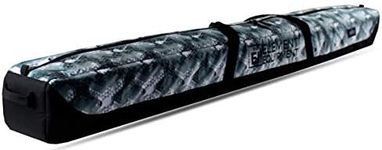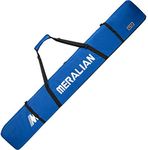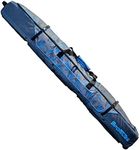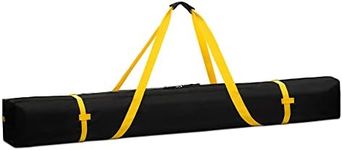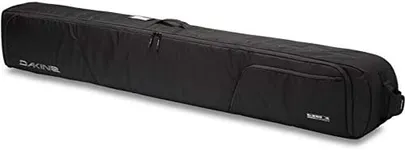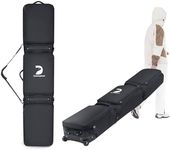Buying Guide for the Best Padded Ski Bags
Choosing the right padded ski bag is essential for protecting your skis during travel and storage. A good ski bag will not only shield your equipment from damage but also make it easier to transport. When selecting a ski bag, consider the size, padding, material, and additional features that will best suit your needs. Here are some key specifications to help you make an informed decision.SizeThe size of the ski bag is crucial because it needs to fit your skis comfortably. Ski bags come in various lengths and widths to accommodate different types of skis, including alpine, cross-country, and powder skis. Measure your skis and choose a bag that is slightly longer to ensure a good fit. If you have multiple pairs of skis, look for a bag that can hold more than one pair. The right size will prevent your skis from moving around too much inside the bag, reducing the risk of damage.
PaddingPadding is important because it provides protection for your skis against impacts and rough handling during travel. Ski bags come with varying levels of padding, from minimal to fully padded. If you travel frequently or your skis are expensive, opt for a bag with more padding to ensure maximum protection. For occasional use or short trips, a bag with moderate padding may suffice. The right amount of padding will depend on how often and how far you travel with your skis.
MaterialThe material of the ski bag affects its durability and weight. Common materials include nylon, polyester, and canvas. Nylon and polyester are lightweight and water-resistant, making them good choices for most skiers. Canvas is heavier but offers excellent durability and protection. Consider the conditions in which you'll be using the bag and choose a material that balances durability with ease of transport. If you often encounter wet or snowy conditions, a water-resistant material is essential.
WheelsWheeled ski bags are convenient for transporting heavy or multiple pairs of skis, especially through airports or long distances. They come with built-in wheels and a handle for easy maneuverability. If you travel frequently or have difficulty carrying heavy loads, a wheeled bag can make your journey much easier. For those who only need to transport their skis short distances or prefer a lighter bag, a non-wheeled option may be more suitable.
Compartments and StrapsCompartments and straps help organize and secure your gear inside the bag. Look for bags with internal straps to hold your skis in place and prevent them from shifting. Additional compartments can be useful for storing accessories like poles, boots, and clothing. If you carry a lot of gear, a bag with multiple compartments will help keep everything organized and protected. Choose a bag with features that match the amount and type of gear you typically travel with.
WeightThe weight of the ski bag itself can impact your overall travel experience, especially if you need to adhere to airline weight restrictions. Lighter bags are easier to carry and handle, but they may offer less protection. Heavier bags, often due to more padding and durable materials, provide better protection but can be cumbersome. Consider how much weight you are comfortable carrying and whether you need to stay within specific weight limits when choosing your ski bag.
